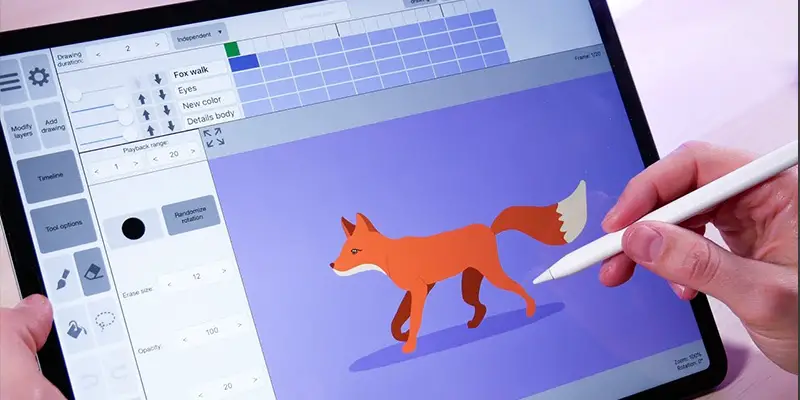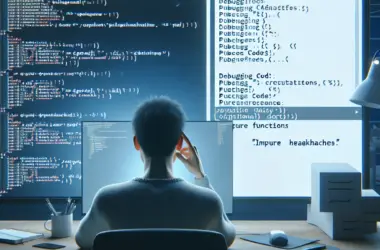Animation Application Annoyances: Debugging Complex Animations In Uis

Executive Summary

Animation is an essential part of many modern user interfaces (UIs). It can be used to create smooth transitions, provide feedback to users, and draw attention to important elements. However, creating and debugging complex animations can be a time-consuming and frustrating process.

This article will discuss some of the common problems that developers encounter when working with complex animations in UIs. We will also provide some tips for debugging these problems.
Introduction
Animation is a powerful tool that can be used to improve the user experience of a UI. However, it can also be a complex and challenging feature to implement. Developers often encounter problems when working with complex animations, such as performance issues, visual glitches, and unexpected behaviors.
FAQs
- What are some of the common problems that developers encounter when working with complex animations in UIs?
- Performance issues
- Visual glitches
- Unexpected behaviors
- How can I debug performance issues with complex animations?
- Use a profiler to identify bottlenecks
- Optimize the animation code
- Reduce the number of animations on the page
- How can I debug visual glitches with complex animations?
- Use a visual debugger to inspect the animation
- Check the CSS for errors
- Test the animation in different browsers
Top 5 Subtopics
- Performance
Performance is one of the most common problems that developers encounter when working with complex animations. Animations can be computationally expensive, and if they are not optimized properly, they can slow down the page.
Here are some tips for optimizing the performance of complex animations:
- Use a profiler to identify bottlenecks. A profiler is a tool that can help you identify which parts of your code are taking the most time to execute. Once you have identified the bottlenecks, you can optimize the code to improve performance.
- Optimize the animation code. There are a number of ways to optimize the animation code, such as using CSS transitions instead of JavaScript animations, reducing the number of frames in the animation, and using hardware acceleration.
- Reduce the number of animations on the page. The more animations you have on the page, the more likely it is that you will encounter performance problems. If you can, try to reduce the number of animations on the page to improve performance.
- Visual Glitches
Visual glitches are another common problem that developers encounter when working with complex animations. These glitches can be caused by a variety of factors, such as errors in the CSS, problems with the browser, or unexpected behaviors in the animation code.
Here are some tips for debugging visual glitches with complex animations:
- Use a visual debugger to inspect the animation. A visual debugger is a tool that can help you visualize the animation and identify any visual glitches.
- Check the CSS for errors. Make sure that the CSS for the animation is correct and free of errors.
- Test the animation in different browsers. Different browsers can render animations differently, so it is important to test the animation in different browsers to make sure that it looks and behaves the same in all browsers.
- Unexpected Behaviors
Unexpected behaviors are another common problem that developers encounter when working with complex animations. These behaviors can be caused by a variety of factors, such as bugs in the animation code, problems with the browser, or unexpected interactions between different animations.
Here are some tips for debugging unexpected behaviors with complex animations:
- Identify the cause of the unexpected behavior. The first step to debugging unexpected behavior is to identify the cause. This can be done by inspecting the animation code, checking the browser logs, and testing the animation in different browsers.
- Fix the cause of the unexpected behavior. Once you have identified the cause of the unexpected behavior, you can fix it by modifying the animation code, updating the browser, or changing the way that the animations interact with each other.
- Code Complexity
Code complexity is another common problem that developers encounter when working with complex animations. Complex animations can be difficult to read and understand, which can make it difficult to debug problems.
Here are some tips for reducing the code complexity of complex animations:
- Break the animation down into smaller parts. Complex animations can be broken down into smaller, more manageable parts. This can make the code easier to read and understand, and it can also make it easier to debug problems.
- Use a modular approach. A modular approach can be used to organize the animation code into separate modules. This can make the code easier to read and understand, and it can also make it easier to reuse the code in other projects.
- Document the code. Documenting the code can help to explain how the animation works and what each part of the code does. This can make the code easier to read and understand, and it can also make it easier to debug problems.
- Testing
Testing is an essential part of the animation development process. Testing can help to identify problems with the animation, such as performance issues, visual glitches, and unexpected behaviors.
Here are some tips for testing complex animations:
- Write unit tests for the animation code. Unit tests can be used to test individual parts of the animation code. This can help to identify problems with the code early on, before they can cause problems in the live environment.
- Perform visual testing. Visual testing can be used to ensure that the animation looks and behaves as expected. This can be done by manually inspecting the animation or by using a visual testing tool.
- Test the animation in different browsers. Different browsers can render animations differently, so it is important to test the animation in different browsers to make sure that it looks and behaves the same in all browsers.
Conclusion
Debugging complex animations can be a time-consuming and frustrating process. However, by following the tips in this article, you can make the process easier and less stressful.
Relevant Keyword Tags
- Debugging
- Animations
- UI
- Performance
- Visual Glitches

